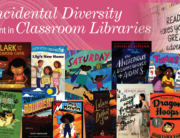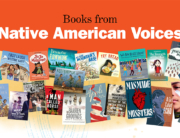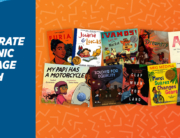Of all the duties of a Booksource Collection Development Specialist, the one we take the most pride in is the curation of the collections in our catalogs and on our website. We carefully consider every decision we make about which books are and are not included. We ask ourselves numerous guiding questions throughout the process:
- Are there too many books on this topic already?
- Should this title be replaced with something newer?
- Is this the right balance of reading levels?
- Will the students and teachers find this collection enjoyable and useful?
- Does this group of books reflect America?
What Does It Mean for a Book Collection to Reflect America?
This last question is often uncomfortable, but is also the most important one of the whole bunch. What exactly does it mean for a book collection to reflect America? There is not a fixed definition, but it is definitely related to diversity. We always aim for a diverse list of books that include authors and characters that represent a variety of cultural, economic, gender and other identities. There is also no checklist to ensure that everyone is included.
So without a solid definition or checklist, how is it done?
Throughout the process, we usually consider at least two to three times the number of titles that end up being in the final collection. Narrowing down the list to a reasonable number is usually the most difficult part! Let’s look at the New Biography & Memoir collections as an example.
Booksource’s New Biography and Memoir Collection
We considered over 100 new titles to select the final 26 titles in the collections. From that large book list, we culled titles by asking ourselves all of the above questions. Through this process, we were able to include engaging titles with the potential to serve as “mirrors and windows” for students in every grade span.
 Our New Biography and Memoir Grades P-2 collection contains gems like Trombone Shorty, a picture book memoir of growing up with the music of New Orleans, and The William Hoy Story, a biography about how a deaf player changed baseball forever.
Our New Biography and Memoir Grades P-2 collection contains gems like Trombone Shorty, a picture book memoir of growing up with the music of New Orleans, and The William Hoy Story, a biography about how a deaf player changed baseball forever.
The Grades 3-6 collection features great titles like 28 Days, which highlights 28 pivotal moments and individuals in African American history, and Ballots for Belva, a biography of the first woman to officially run for President.
The Middle School and High School collections include titles like Voice of Freedom, a high-interest picture book biography about civil rights champion Fannie Lou Hamer, and The Inker’s Shadow, author Allen Say’s memoir highlighting his journey as a stranger in America.
More than Just Diversity Collections
Many historical events and individuals covered in the average school year make learning about diverse figures inevitable (i.e., the Civil Rights Era). But what about in genre, leveled, or other types of collections where diversity is not the focus? Even in an elementary picture book collection of fantasy titles, it is important for students to see many types of characters represented.
 Raising Dragons by Jerdine Nolen and Grasshopper Jungle by Andrew Smith are both great example of a titles that feature diverse characters without diversity being the point of the book.
Raising Dragons by Jerdine Nolen and Grasshopper Jungle by Andrew Smith are both great example of a titles that feature diverse characters without diversity being the point of the book.
In Raising Dragons, a young girl hatches a large egg and decides to raise the resulting baby dragon, much to her parents’ chagrin. The dragon helps around the farm and wins over the family and eventually the whole community. Nowhere in the text is the race of the protagonist mentioned, however the illustrations depict an African American family.
Grasshopper Jungle follows the story of Austin, a high school student who may have inadvertently been involved in releasing giant and voracious insect-like creatures on North America. As Austin and his friends try to save the world, or at least themselves, he occasionally finds himself wondering if he would prefer kissing boys or girls.
Both of these titles are engaging, exciting and appropriate for their intended age groups. Both deal with events and challenges experienced by the protagonists. However, neither title focuses on the “otherness” of the characters. Being African American or bisexual are just part of the identity of the characters–not their whole identity.
Why Does It Matter?
As many blog posts, conference speakers and other literacy experts have emphasized, diverse characters are important because books can serve as both mirrors and windows. If readers only experience characters of a certain type only in stories that revolve around their “otherness,” then individuals with those characteristics will always be at least partially defined by stereotypes encountered and emphasized in books and other media.
Here are some links to our favorite blog posts and other resources on this topic:
- Windows, Mirrors, and Portals to Magic by Kirsten Leclerc
- Having Diverse Books Is Not Enough by Katharine Hale
- The Danger of a Single Story by Chimamanda Ngozi Adichie
While not every American experience can be represented in every book list, we have done our best to include titles that offer numerous opportunities for students to make connections to their own experiences, as well as opportunities to broaden their horizons by reading about characters very different than themselves.








Leave A Comment